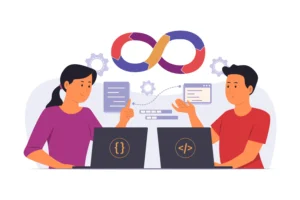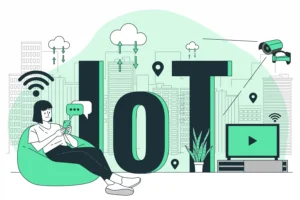Whether you manufacture cars, food beverages, laminates, or medicines, production quality and yield are two of the industry’s top performance metrics. A Vision Quality Inspection can help you detect any defect at once, and save you a money drain from recovering faults, generated scrap, lifted work in process inventory, decreased yield, post-sales warranty, recalls, claims, and repairs. You might end up dealing with all of it.
Problems with Current Visual Inspection Approaches
Manufacturing is a multi-layered process where an item’s visual inspection might include more than a step. Usually, visual inspection is utterly manual and a time-eating process that lacks consistency due to other factors.
- Manual inspections are done by experts with diverse backgrounds and different experiences. Therefore, different inspectors might have different opinions on a product’s quality. This situation may lead to a lack of consistency.
- A traditional quality inspection might require inelastic systems that might fail to comply with the product’s modifications.
- Common machine inspections can only detect a handful of defects at a time.
To help manufacturers produce more accurately and cost-efficiently, Trident Information Systems has brought Visual Quality Inspection. It is a purpose-built Machine Vision System plus our best Artificial Intelligence combined, for Automotive, Pharmaceutical, FMCG, Laminates, Cement, and Glass.
Impact of a Smart Visual Inspection on Your Business
An automatic Visual Inspection in Manufacturing spots detects right on the conveyor. Its HD vision camera never misses a fault. Unlike manual inspections, our Automatic Visual Inspection cuts corners and leaves you enough efficiency to spend on other productive areas. Witness a boost in quality and production with this automation. Cut costs and enhance overall factory production.
Production Boost
Unlike manual inspections, an Intelligent Machine Vision System detects defects straight on the conveyor, detecting minor detects like scratches, slight discoloration, small tears, dust particles, and so on. The inspection process catches pace and leaves you and your staff enough time to focus on other KPI (Key Performance Indicators)
Enhanced Flexibility
The advanced automatic Defect Detection in Manufacturing technology comes with flexibility. You can integrate it with either your existing surveillance or get a fresh set of cameras. Additionally, the system gets accustomed to product modifications quite easily. In other words, if you decide to make slight modifications to your final product, the machine can easily get accustomed to it.
Greater Accuracy
Human eyes may miss certain defects, but machines do not. Even if there is a little scratch on a glass product, the machine quickly detects it and displays an alert on your computer screen. It ends up ensuring production efficiency and quality rise. Analyze the defects straight away and make necessary corrections.
Remote Access
The best part of vision quality inspection is its remote access. You no longer must be there around the conveyor belt to ensure every product is finely manufactured. Simply, sit in one corner and track all the levels of manufacturing. It enhances efficiency and quality. As soon as there is a defect, the system flashes an alert on the screen, so you quickly notice it and prevent further defects.
Labor Cost Reduction
Vision Quality Inspection cuts labor costs since everything is handled by machine and minimum workforce monitors end-product quality. Optimize your labor in different production sections where machines cannot play a part.
Standard Detection Consistency
In manual inspections, the inspector detects defects reflecting their point of view and past experiences. Hence, different inspectors might have different viewpoints which lead to inconsistency. However, this can never be the case with Visual Quality Inspection.
Why Should You Implement Trident’s Visual Quality Inspection?
Our Visual Quality is designed specifically to detect minute defects your naked eyes might miss. Coupled with digital sensors, RFID (radio frequency identification) tags, QR codes, and a high-definition camera, no defect can slip through. With optical sensors, it captures images and transmits them to computers for further processing.
Trident’s VQI enables the following solutions supported by optical camera vision, thermal camera vision, and X-ray vision:
- Visual Defect Detection.
- Presence absence of components
- OCR
- Barcode and QR code reading
- Classification of products
- Relative dimension monitoring
- High-speed detection on Line/Conveyer
Visual Quality Inspection Process
- Captures environmental conditions
- Captures pictures of good products and defective products.
- Augment and classify defects vs good product images.
- Annotate defects in images.
- Simulate environmental conditions.
- Training the AI Model
- Test classification accuracy and confidence level.
- Deploy model for production inspection.
Industry Use Cases
Trident covers six Industries i.e., Pharmaceuticals, Cement, Glass, FMCG, laminates, and Automotive. Our flexible and Intelligent Machine Inspection focuses on each of their requirements and serves accordingly.
Pharmaceuticals
Track defected, missing, chipped, or powdered tablets or foreign tablets. Inspect the quality of stopper seals, containers, crimps, and caps, also check the filling level. Real every industrial code, inspect labels, read, and verify optical characters (OCR and OCV).
Cement
Monitor the accurate cement shade, ensure it is uniformly grey with a hint of green shade. Ensure the cement does not have any lumps forming due to atmospheric moisture. Check the cement texture precisely and detect any adulteration like sand particles and dust that may disrupt its smoothness.
Glass
Identify any distortion or refraction on the windshield, side glass, and so on. Also, check patches, scratches, dust, and marks. Inspect the proper printing of logos. Measure accurate dimensions and check any irregularities and distortions.
FMCG
Detect foreign components such as small insects, dust, stone, unwanted vegetable components such as thorns and wood. Check structural quality and dimensions, ensure the presence of required components. Monitor color accuracy and measure the product’s intensity along with the spectrum of the object’s illustration.
Laminates
Spot subtle defects such as resin spots, foreign particles, dust particles, mosquito defects, and design thorns while eliminating human efforts. Check the sticking barcode’s efficiency and sheet classification. Monitor solution levels, weights, and temperature within the tanks via Intelligent Machine Vision System.
Automotive
Read barcode labels and 2D barcodes from the marled parts, detect labels, and Direct Part Marks (DPM). Identify cracks, dents, and wrinkles in any part during the manufacturing process, also recognize piston defects. Measure part’s dimensions such as inner or outer diameters of O ring. Check the angle of the metal tips. Check the label and edge positions.
Trident has been serving various business ventures since 1999. After winning several awards, we were recognized as the Gold Partner of Microsoft and LS Retail. Armed with 150+ technical resources and two decades of experience never failed a single client. For further queries contact us.




